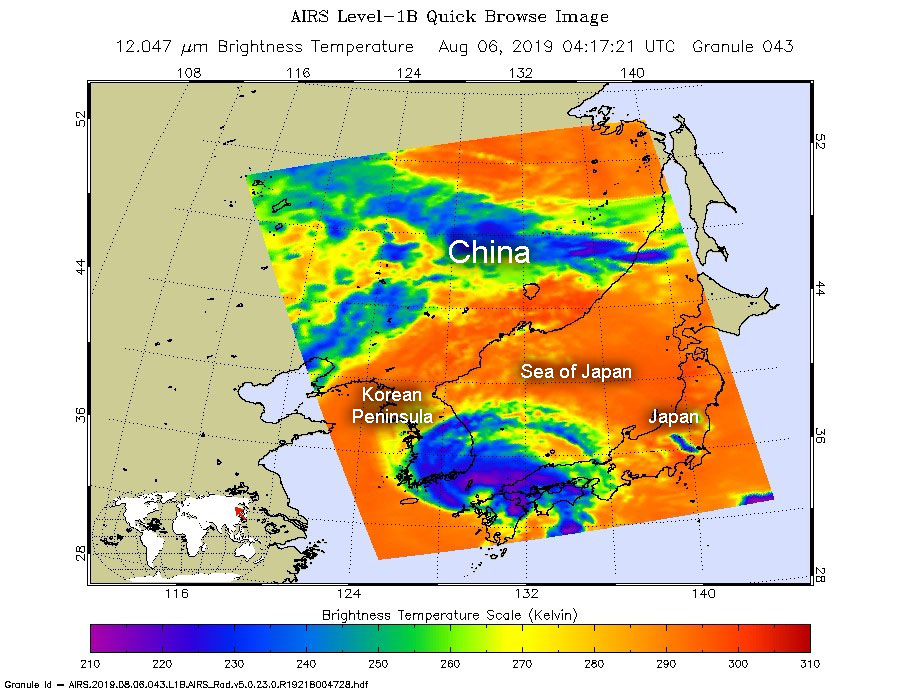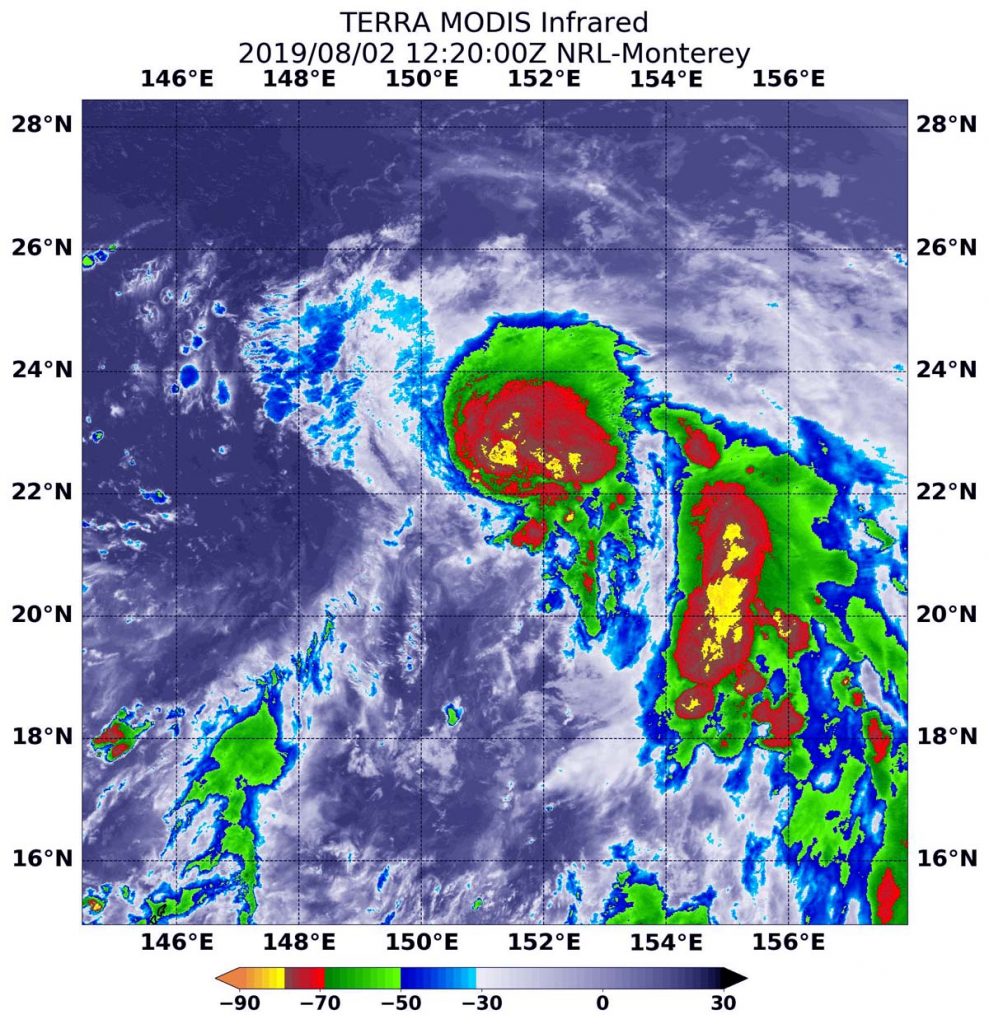Aug. 07, 2019 – NASA Catches Transitioning Tropical Storm Francisco near Korean Peninsula
NASA’s Aqua satellite passed over the Sea of Japan and provided forecasters with a visible image of Tropical Storm Francisco as it was transitioning into an extra-tropical cyclone.

Often, a tropical cyclone will transform into an extra-tropical cyclone as it recurves toward the poles (north or south, depending on the hemisphere the storm is located in). An extra-tropical cyclone is a storm system that primarily gets its energy from the horizontal temperature contrasts that exist in the atmosphere. Extra-tropical cyclones (also known as mid-latitude or baroclinic storms) are low pressure systems with associated cold fronts, warm fronts, and occluded fronts.
Tropical cyclones, in contrast, typically have little to no temperature differences across the storm at the surface and their winds are derived from the release of energy due to cloud/rain formation from the warm moist air of the tropics. Structurally, tropical cyclones have their strongest winds near the earth’s surface, while extra-tropical cyclones have their strongest winds near the tropopause – about 8 miles (12 km) up.
On Aug. 7, 2019 at 1:00 a.m. EDT (0500 UTC), the Moderate Resolution Imaging Spectroradiometer or MODIS instrument aboard NASA’s Aqua satellite provided a visible image of Francisco that showed it was still along the coast of the Korean Peninsula. It also appeared elongated from south to north.
At 5 a.m. EDT (0900 UTC), the Joint Typhoon Warning Center issued the final warning on Francisco. Maximum sustained winds dropped to near 35 knots (40 mph/65 kph). It was centered near 39.6 degrees north latitude and 129.3 degrees east longitude. That is 166 nautical miles northeast of Seoul, South Korea. Francisco was moving to the northeast.
The Joint Typhoon Warning Center noted that Francisco will traverse the Sea of Japan and move over Hokkaido while weakening.



